#doubleday ny
Explore tagged Tumblr posts
Photo
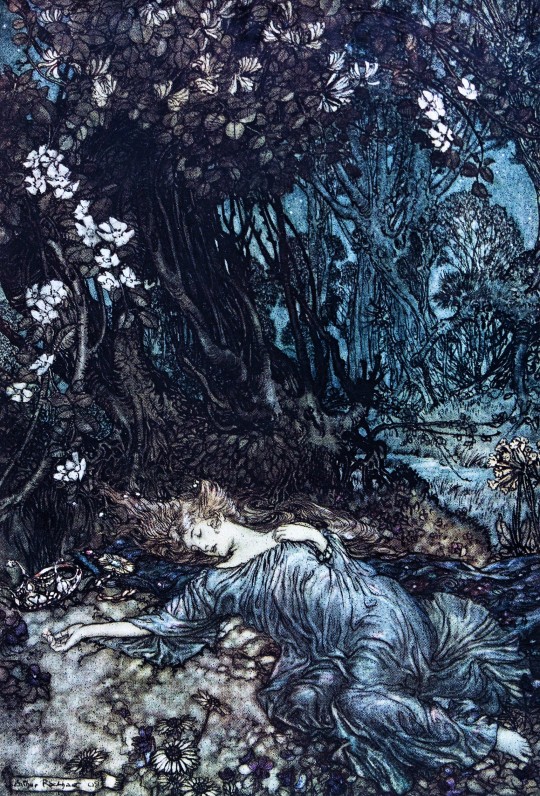
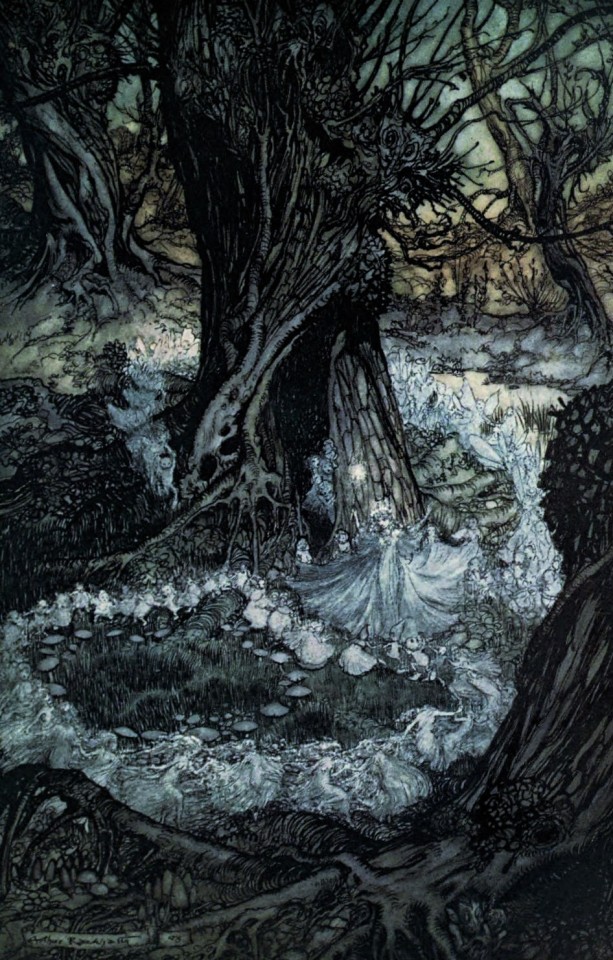
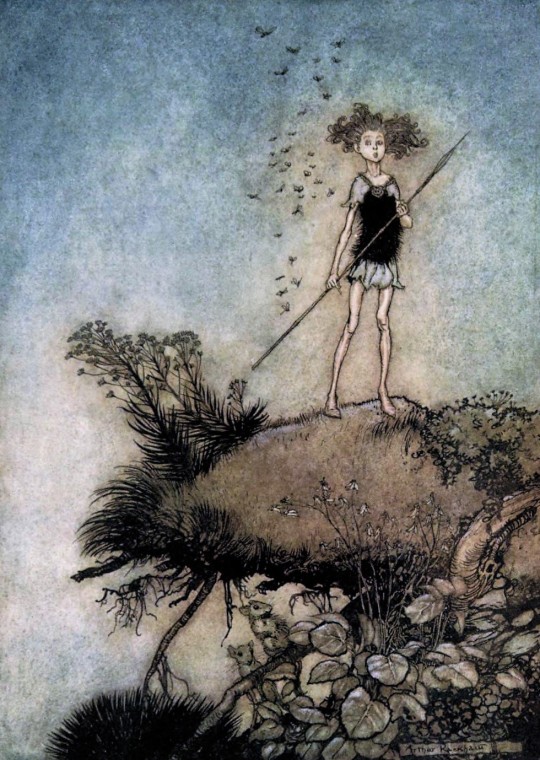



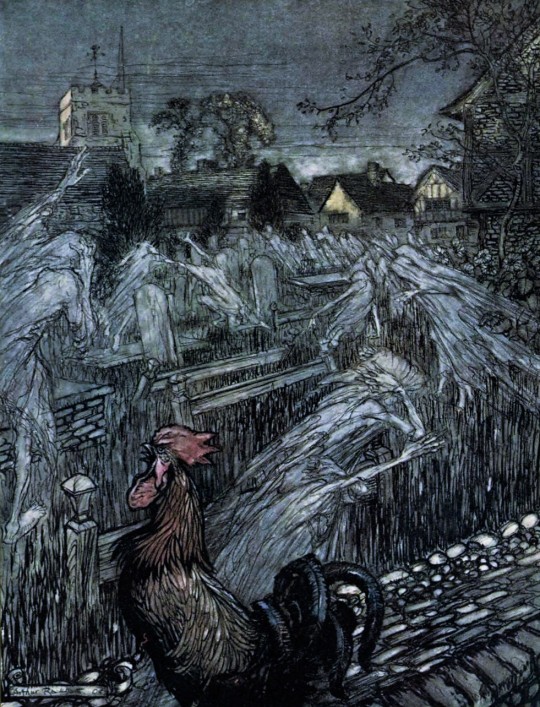
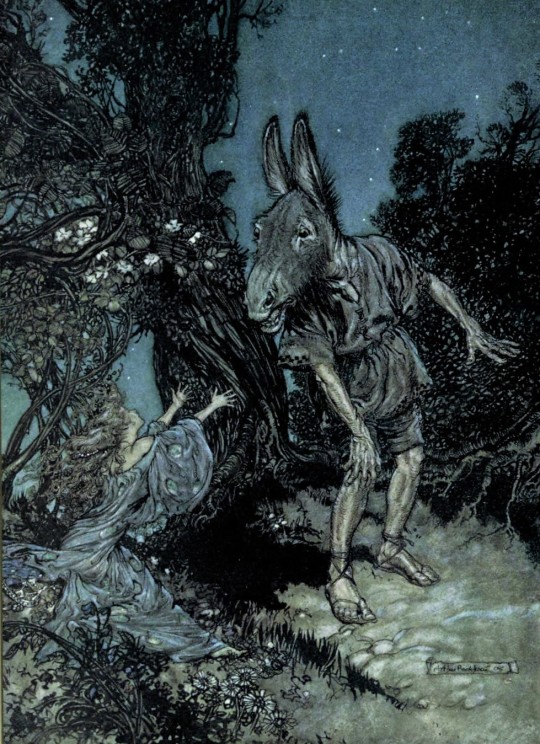
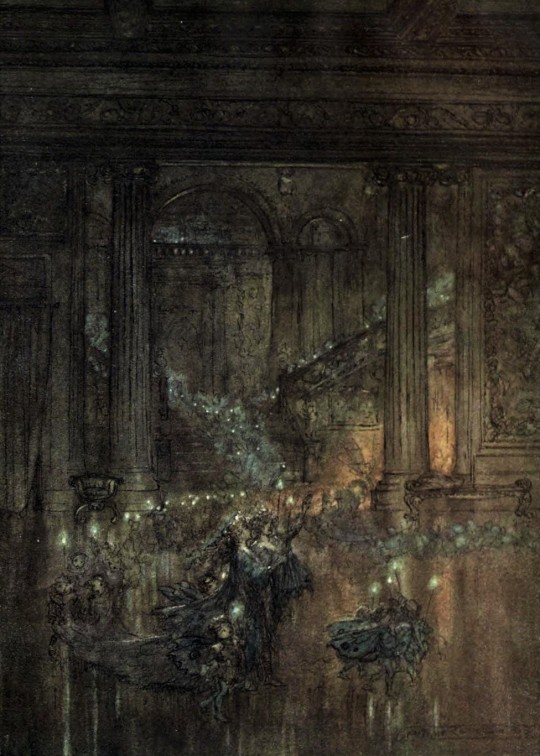

A Midsummer Night's Dream - art by Arthur Rackham (1908)
#arthur rackham#a midsummer night's dream#william shakespeare#book illustrations#fairy art#fantasy art#fairies#sprites#theatre plays#puck#titania#oberon#william heinemann#doubleday ny#1900s#1908
487 notes
·
View notes
Text
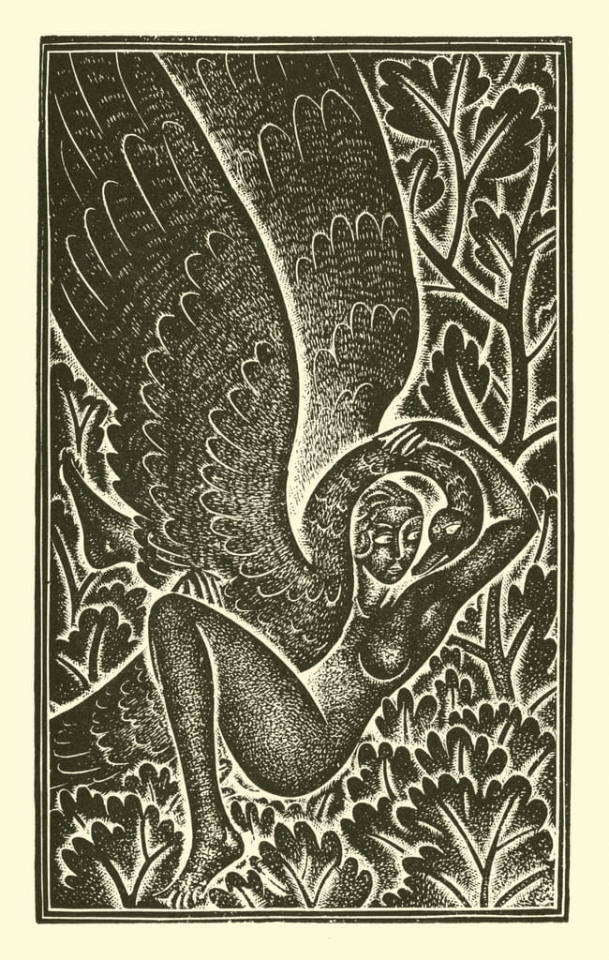
Eric Gill (British, 1882–1940)
Frontispiece engraving for Aldous Huxley's Leda (Garden City, NY: Doubleday, Doran & Co., 1929)
128 notes
·
View notes
Text
Jan - Jun 2024 Reading List
Atkinson, Ti-Grace. Amazon Odyssey. New York: Links Books, 1974.
Barrett, Ruth. Women’s Rites, Women’s Mysteries: Intuitive Ritual Creation. Woodbury, Minnesota: Llewellyn Publications, 2007.
Criado Perez, Caroline. Invisible Women: Data Bias in a World Designed for Men. New York: Abrams Press, 2019.
Daly, Mary. Gyn/Ecology: The Metaethics of Radical Feminism. Boston: Beacon Press, 1978.
Dworkin, Andrea. Woman Hating. New York: E.P. Dutton, 1974.
Millett, Kate. Sexual Politics. Garden City, NY: Doubleday & Company, Inc., 1970.
Rossi, Alice S. The Feminist Papers: From Adams to De Beauvoir. New York: Columbia U.P., 1973.
14 notes
·
View notes
Text
Bibliography
Bucher, Taina. 2018. If . . . Then: Algorithmic Power and Politics. Oxford: Oxford University Press.
Carter, Daniel. 2016. "Hustle and Brand: The Sociotechnical Shaping of Influence." Social Media + Society 2. no.3: 1-12. https://doi.org/10.1177/2056305116666305
Cheney-Lippold, John. 2011. "A New Algorithmic Identity: Soft Biopolitics and the Modulation of Control." Theory, Culture & Society 28, no.6: 164-181. https://doi.org/10.1177/0263276411424420
Deleuze, Gilles. 1992. "Postscript on the Societies of Control." October 59: 3-7. https://www.jstor.org/stable/778828
Feldman, Zeena. 2021. "‘Good food’ in an Instagram age: Rethinking hierarchies of culture, criticism and taste." European Journal of Cultural Studies 24, no.6: 1340-1359. https://doi.org/10.1177/13675494211055733
Goffman, Erving. 1956. The Presentation of Self in Everyday Life. New York, NY: Doubleday.
Herman, Jenny L. 2017. "#EatingfortheInsta: A Semiotic Analysis of Digital Representations of Food on Instagram." Graduate Journal for Food Studies 4, no.2: 21-32. https://gradfoodstudies.org/2017/11/11/eating-for-the-insta/
Kitiarsa, Pattana. 2010. "Toward a Sociology of Religious Commodification." In The New Blackwell Companion to the Sociology of Religion, edited by Bryan S. Turner, 563-583. Oxford: Blackwell Publishing Ltd.
Marwick, Alice E., and danah boyd. 2011. “I tweet honestly, I tweet passionately: Twitter users, context collapse, and the imagined audience.” New Media & Society 13, no.1: 114-133. https://doi.org/10.1177/1461444810365313
Nagy, Peter, and Gina Neff. 2015. “Imagined Affordance: Reconstructing a Keyword for Communication Theory.” Social Media + Society 1, no.2: 1-9. https://doi.org/10.1177/2056305115603385
Rodgers, Harry, and Emily Lloyd-Evans. 2021. "Intimate Snapshots: TikTok, Algorithm, and the Recreation of Identity." Anthways 1, no.1: 11-22. https://doi.org/10.5281/zenodo.5515620
Sontag, Susan. 2019. On Photography. London: Penguin.
Zaid, Bouziane, Jana Fedtke, Don Donghee Shin, Abdelmalek El Kadoussi, and Mohammed Ibahrine. 2022. "Digital Islam and Muslim Millennials: How Social Media Influencers Reimagine Religious Authority and Islamic Practices." Religions 13, no.4: 1-15. https://doi.org/10.3390/rel13040335
2 notes
·
View notes
Text
Game Called
The trip is off. #Project365
Calling Norwalk/McMahon in 2015 in Cooperstown It was late February when I saw the post. Brien McMahon and Stamford High Schools announced that their baseball teams were going to play a regular season game at Doubleday Field in Cooperstown, NY. Just steps from the Hall of Fame. I had to go, even if I paid for it myself. The game would air on Robcasting. I emailed both athletic directors and they…

View On WordPress
0 notes
Link
Check out this listing I just added to my Poshmark closet: Real Book Of Science Experiments Joseph Leeming 1957 Doubleday Hardcover.
0 notes
Link
Check out this listing I just added to my Poshmark closet: The Family Treasury Of Children's Stories Book Two.
0 notes
Text
Week 13th: November 29th Creative research and Scholarly research
for this week, I focused on reading The Presentation of self in Everyday life as it was going to be a source for my paper. I found the book fascinating and I liked how it explores how we interact with other humans during different social events and how we end up believing what the person wants us to see (either consciously or subconsciously).
Goffman, Ervin. The Presentation of Self in Everyday Life. New York, NY: Doubleday
Anchor Books, 1959.
For my creative research, I honestly didn't do a whole lot due to time constraints and also focusing on reading the book but I did try to watch more of the rehearsal on HBO Max and it was as intense as when I first watched it, but with the knowledge I had now, I understood more of the main character stuggles. Still haven't been able to finish the series and I still have qualms about the main character but I do understand more of where he is coming from.
0 notes
Link
Check out this listing I just added to my Poshmark closet: THE LAST PLANTAGENETS: COSTAIN, THOMAS B. - DOUBLEDAY & CO, NY 1962.
0 notes
Photo

Ubik. DICK, Philip K. Graden City, NY: Doubleday & Company, Inc. 1969. 1st book club ed. 8vo, original cloth. Signed by PKD on the title page. Near fine in a very good dust jacket. Dust Jacket by Peter Rauch.
Ubik "features the creation of a subjective world by a group of people killed in an accident but restored to a kind of consciousness within a preservative machine, though any final determination of what is real in the book is made superbly problematical" (Clute & Nicholls, 329). "A brilliantly realized science fiction future darkened by Kafkaesque paranoia. As portrayed by Dick, a world in which cryogenic suspension has abolished traditional concepts of death and in which psychics can alter the future by changing the past is one that offers no foundation for objective truth" (Barron, Fantasy and Horror 6-113). It was chosen by Time magazine as one of the 100 greatest novels since 1923.


(via Raptis Burnside and Dangerous Minds)
14 notes
·
View notes
Photo



While cataloging our collection of the works of Arthur Conan Doyle, we recently uncovered that we had not one but TWO autographs from the famed Sherlock Holmes writer.
The ink signatures come from our two sets of The Crowborough Edition of the Works of Sir Arthur Conan Doyle. The 20-volume sets were named after the town of Crowborough in East Sussex, England, the place where Arthur Conan Doyle spent the last 23 years of his life. In each of the 760 sets printed, the British author only signed the first volume, which contains his Rodney Stone, a novel that blends Gothic mystery and boxing. The American firm Doubleday, Doran & Co. published the Crowborough edition in 1930. Conan Doyle died of a heart attack at the age of 71 in July of the same year.
Images from:
Doyle, Arthur Conan. The Crowborough Edition of the Works of Sir Arthur Conan Doyle. Garden City, NY: Doubleday, Doran, 1930.
Call number: PR4620 .A2 1930
Catalog record: https://bit.ly/3n5GYKx
8 notes
·
View notes
Text
— Science Fiction & Horror by #FredricBrown [1] —


ANGELS AND SPACESHIPS (NY: Dutton, 1954). Reprinted as STARSHINE (NY: Bantam, 1956). Cover by Richard Powers.


THE BEST OF FREDRIC BROWN (Garden City, Nelson Doubleday, 1976). Cover by Richard Corben). First paperback (NY: Ballantine, 1977) Cover by #H.R.vanDongen.


DAYMARES (NY: Lancer, 1963). HONEYMOON IN HELL (NY: Bantam, 1963)


THE LIGHTS IN THE SKY ARE STARS (NY: Dutton, 1953). Paperback (NY: Bantam, 1954) Cover by #MitchellHooks.

MARTIANS, GO HOME (NY: Dutton, 1955). First paperback (NY: Bantam, 1956). Reprint (Ballantine, 1976). Cover by Frank Kelly Freas.
#books#book cover#book blog#books books books#horror#science fiction#mitchell hooks#frank kelly freas#richard corben#richard powers
5 notes
·
View notes
Text
A STEP FROM CALVINISM
This blog will now turn to an effort this writer will revisit in the future. He fears he might have misled the reader of this blog a bit and this effort is meant to clear any misconceptions. He has repeatedly claimed that the US had as a dominant view of governance and politics what he calls the parochial/traditional federalism view or construct. He described that view in more or less positive language although he has pointed out that it encouraged or justified Americans holding racist and other xenophobic beliefs, attitudes, and values.
He didn’t underestimate those negative qualities, but he did want to make sure the reader appreciates its positive qualities. The positive qualities have to do with the construct’s set of espoused values of community, partnership, and collaboration. But at the same time, people who held on to its espoused values made no excuses for the exclusionary policies its adherents proposed and maintained. Those policies included slavery, discriminatory practices, and other exclusionary behaviors Americans commonly put into effect.
Probably the most direct and unambiguous pronouncement of this exclusion can be found in the Supreme Court’s decision in the Dred Scott Case. Chief Justice Taney clearly states that African Americans – be they enslaved or not – were not part of the partnership the Constitution established. Here is a portion of that decision:
In the opinion of the court, the legislation and histories of the times, and the language used in the declaration of independence, show, that neither the class of persons who had been imported as slaves, nor their descendants, whether they had become free or not, were then acknowledged as a part of the people, nor intended to be included in the general words used in the memorable instrument … [1]
Taney here is not shy of what he interpreted the founding compact to be in terms of African Americans.
And a lot of this exclusion falls in line with certain religious biases generally held but originating with the Puritan settlers of the Massachusetts colony and, in general, in the New England. It was the Puritans who introduced the covenanted approach to the establishment of governments.
Puritanism was based on Calvinism that, in turn, believed in strict moral precepts, predestination, and a rebellion against adorned trappings and the hierarchical organization of the Roman Catholic and Anglican Churches. Through these beliefs, that tradition promoted an equality within its congregations and as interpreted in governance, this sense of partnership was strongly encouraged but as indicated years later by Taney’s opinion, was limited to those considered part of the “tribe.”
Such scholars as Donald Lutz[2] have traced how these precepts, especially those based on congregational ideals, worked their ways into the various founding documents. These documents were drawn in the localities within the original thirteen colonies. One can also detect them guiding the development of the states as the nation initially established its governments and expanded westward across North America.
This posting begins this writer’s effort to take a closer look at that historical record. The postings that will further this effort will not be immediately follow each other (although the next posting, at least, will continue this posting’s message). Instead, this topic will be revisited here and there but with more frequency in the upcoming year or so.
This first installment looks at the effect of this tradition on the development of the nation’s public schools. And the first topic has to do with the hiring of teachers. By the 1820s, school officials were finding it difficult to fill teaching slots in what had been a male dominated “profession.” The problem was a reluctance to raise either taxes or church contributions to pay men sufficiently.
The option was to hire women to those positions. In terms of timing, this coincided with the efforts to establish independent public schools especially in Massachusetts and through the work of Horace Mann. His story is telling in terms of how parochial/traditional federalism influenced the development of the nation’s initial efforts to provide public education.
And it is with him that this blog begins its look at this development. Relevant to this story, Mann was elected to the lower house of the Massachusetts’ legislature in 1827. His political leanings encouraged him to join up with the initial political organizing that led to the establishment of Whig Party. This was a movement that brought together socially liberal advocates with northeastern business interests.
They were liberal in that they pushed for the establishment of insane asylums and for public funding of schools for the deaf and blind. He himself argued for an end to the death penalty and doing away with lotteries as being unchristian. He attained a level of notoriety when he was assigned to investigate the burning of a Catholic convent in the town of Charleston. This led to his political advancement that resulted in his election to the state senate.
An ironic aspect of his story was his belief in phrenology – the belief in and analysis of people’s physical attributes as causal factors in their behaviors. He, unlike others who looked at such characteristics, used the derived analyses as a way to discover potential shortcomings in people that could be addressed by education.
That is, “[d]uring the nineteenth century, phrenology was considered a progressive ideology. Its proponents believed that each individual’s deficiencies could be identified, then ameliorated through schooling; … [and therefore] would eradicate poverty and crime in just a few generations.”[3] Interestingly, he saw the utilization of phrenology as a substitute for the prevailing reliance on religion to guide such judgements. Further, through that guidance one could lead challenged individuals – even arsonists – to productive lives.
This bent in his public acts did not go unnoticed by local religious personage and elicited a fire-and-brimstone sermon reaction from the local Calvinist preacher. But the experience led Mann to take up education as an issue that would lead him to establish his place in American history. School reform became his life’s work. And in this he bucked the thrust of Whigs who favored laissez faire policies in the economy and other social areas of concern.
By the late 1830s he was leading Whigs to establish a state board of education to oversee Massachusetts’ local schools and to institute compulsory education. By that time, as a state senator, he left the legislature to become the first state’s secretary of education. He took it upon himself to become versed in educational theories and looked to reputable systems particularly Prussian schools. That European system in the nineteenth century instituted various policies to upgrade the teaching profession including higher pay and prohibition of teachers holding other jobs.
From the Prussian example, Mann instituted the policy for the Massachusetts’ school system that every school have a library and that the state established “normal schools” for the purpose of training teachers. Again, normal schools were originally only open to women applicants – the reasoning being women could be paid less than men. Later in the twentieth century, these schools were converted into regional state colleges (having lower admission standards than state universities).
Unfortunately, much of Mann’s reasoning for these sexist policies had to do with his sexist beliefs. While he saw teaching as a woman’s profession, albeit economic reasoning was offered, he also believed women were not appropriate for certain occupations such as politics, military, and journalistic professions – they were not suitable due to their “black and sulfurous” environments.
All these elements of the Mann’s story were instrumental in defining how Calvinist traditions and biases affected the development of American education. The aim is to give the reader some of the detail of how this influence was felt and give a hint, at least, as to why it finally gave way to the natural rights view. There were various social and political forces that pushed toward the eventuality of that transformation.
[1] “Dred Scott v. Stanford, (19 HOWARD 393 (1857)),” in Major Problems in American Constitutional History, Volume I: The Colonial Era Through Reconstruction, ed. Kermit L. Hall (Lexington, MA: D. C. Heath and Company, 1992), 463-470, 465.
[2] Donald S. Lutz (ed.), Colonial Origins of the American Constitution: A Documentary History (Indianapolis, IN: Liberty Fund,1998).
[3] Dana Goldstein, The Teacher Wars: A History of America’s Most Embattled Profession (New York, NY: Doubleday, 2014), 23. The historical information in this posting is drawn from this source.
#Horace Mann#public education#Dred Scott decision#parochial/traditional federalism#Puritanism#Calvinism#civics education#social studies
1 note
·
View note
Link
Check out this listing I just added to my Poshmark closet: Best In Children's Books.
0 notes
Note
I know it’s just coincidence but I’m even more pissed off that Lucy’s sisters birthday happens to fall on Portia’s birthday too. Also noted that Portia is back in NY right now but Rami’s f*cked off to London again? Hmm
Celebrate the true queen! Ms. Doubleday.
2 notes
·
View notes
Text
Some of these sources might be useful for anyone interested in indigenous Polynesian and Micronesian ethnobotany, folklore, and astronomy:
-
Abbott, Isabella A. “Polynesian Uses of Seaweed.” In Islands, Plants, and Polynesians: An Introduction to Polynesian Ethnobotany. Edited by Paul Alan Cox and Sandra Anne Bannack. Portland, Oregon: Dioscorides Press, 1991.
Alencar, Victor Aves. “Sky Observation and Mythology: Paths to an Astronomical Culture.” Proceedings of the International Astronomical Union Volume 5 Issue S260, 207-212.
Allen, Melinda S. “Coastal Morphogenesis, Climatic Trends, and Cook Islands Prehistory.” In Cultural Ecology in the Pacific Islands. Edited by Patrick V. Kirch and Terry L. Hunt. New Haven: Yale University Press, 1997.
Alpers, Antony. Legends of the South Sea: The World of the Polynesians seen through their Myths and Legends, Poetry and Art. New York: Thomas Y. Crowell Company, 1970.
Anderson, Atholl. “Epilogue: Changing Archaeological Perspectives upon Historical Ecology in the Pacific Islands.” Pacific Science 63:4 (2009).
Aswani, Shankar and Michael W. Graves. “The Tongan Maritime Expansion: A Case in the Evolutionary Ecology of Social Complexity.” Asian Perspectives 37:2 (1998).
Aveni, Anthony. People and the Sky (Our Ancestors and the Cosmos). New York: Thames and Hudson Inc., 2008.
Bannack, Sandra Anne. “Plants and Polynesian Voyaging.” In Islands, Plants, and Polynesians: An Introduction to Polynesian Ethnobotany, edited by Paul Alan Cox and Sandra Anne Bannack. Portland, Oregon: Dioscordes Press, 1991.
Beckwith, Martha. Hawaiian Mythology. Honolulu: University of Hawaii Press, 1977.
Black, Sharon, Thomas Wright and Lynnette Erickson. “Polynesian Folklore: An Alternative to Plastic Toys.” Children’s Literature in Education 32:2 (2001).
Buck, Peter H. Vikings of the Sunrise. New York: Stokes, 1938.
Burley, David V. “Archaeological Demography and Population Growth in the Kingdom of Tonga: 950 BC to the Historical Era.” In The Growth and Collapse of Pacific Island Societies: Archaeological and Demographic Perspectives. Edited by Patrick V. Kirch and Jean-Louis Rallu. Honolulu: University of Hawaii Press, 2008.
Connell, John. “Island Dreaming: The Contemplation of Polynesian Paradise.” Journal of Historical Geography 29:4 (2003).
Coppett, Daniel and Andre Iteanu. Cosmos and Society in Oceania (Explorations in Antrhopology). Oxford: Berg Publishers, 1995.
Couper, Alastair. Sailors and Traders: A Maritime History of the Pacific Peoples. Honolulu: University of Hawaii Press, 2009.
Crawford, Peter. Nomads of the Wind: A Natural History of Polynesia. London: BBC Books, 1993.
Cunningham, Sean P. “A Story of Yams, Worms, and Change from Ancestral Polynesia.” The Journal of Island and Coastal Archaeology 7:2 (2012).
D’Arcy, Paul. The People of the Sea: Environment, Identity, and History in Oceania. Honolulu: University of Hawaii Press, 2006.
Despland, Michel. “Two Ways of Articulating Outsider’s Knowledge of Polynesian Culture and Religion: Melville’s Typee and Mardi.” Method and Theory in the Study of Religion 16:2 (2004).
Devall, Bill and George Sessions. Deep Ecology: Living as if Nature Mattered. Layton, Utah: Gibbs Smith, 1985.
Edwards, Edmundo. “Astronomically-aligned Religious Structures on Raiatea and Raivavae and the Matariki Festival of 1770 on Easter Island.” Proceedings of the International Astronomical Union Volume 7, Symposium S278 (2011).
Eliade, Mircea. “Nostalgia for Paradise.” In The Inner Journey: Myth, Psyche, and Spirit (PARABOLA Anthology Series). Edited by Martha Heyneman. Series Editor: Ravi Ravindra. Sandpoint, Idaho: Morning Light Press, 2008.
Filihia, Meredith. “Shamanism in Tonga: An Assessment.” The Journal of Polynesian Society 117:4 (2008).
Finney, Ben. “Myth, Experiment, and the Reinvention of Polynesian Voyaging.” American Anthropologist 93:2 (1991).
Gladwin, Thomas. East is a Big Bird: Navigation and Logic on Puluwat Atoll. Cambridge, Massachusetts: Harvard University Press, 1970.
Glavin, Terry. The Last Great Sea: A Voyage through the Human and Natural History of the North Pacific Ocean. Vancouver, British Columbia: Greystone Books, 2000.
Gooley, Tristan. The Natural Navigator: The Rediscovered Art of Letting Nature Be Your Guide. New York: The Experiment, 2012.
Goto, Akira. “Archaeoastronomy and ethnoastronomy in the Ryuku Islands: A preliminary report.” Proceedings of the International Astronomical Union Volume 7, Symposium S278 (2011).
Grimble, Arthur. “Gilbertese Astronomy and Astronomical Observations.” Journal of the Polynesian Society 40 (1931).
Grimble, Arthur. Migrations, Myth and Magic from the Gilbert Islands. London: Routledge, 1972.
Groube, L.M. “Tonga, Lapita Pottery, and Polynesian Origins.” Journal of Polynesian Society 80:3 (1971).
Gunson, Niel. “A Note on Oceanic Shamanism.” Journal of the Polynesian Society 119:2 (2010).
Gunson, Niel. “Understanding Polynesian Traditional History.” The Journal of Pacific History 28:2 (1993).
Hamacher, Duane W. and Ray P. Norris. “‘Bridging the Gap’ through Australian Cultural Astronomy.” Proceedings of the International Astronomical Union Volume 7, Symposium S278 (2011).
Hames, Raymond. “The Ecologically Noble Savage Debate.” Annual Review of Anthropology 36 (2007).
Heyerdahl, Thor. Early Man and the Ocean (A Search for the Beginnings of Navigation and Seaborne Civilizations). Garden City, NY: Doubleday & Company, 1979.
Irwin, Geoffrey. The Prehistoric Exploration and Colonisation of the Pacific. Cambridge: Cambridge University Press, 1996.
Kahn, Miriam. “Tahiti: The Ripples of Myth on the Shores of the Imagination.” In History and Anthropology 11:4 (2003).
Kalakaua, His Hawaiian Majesty King David. “Hina: The Helen of Hawaii.” In The Legends and Myths of Hawaii. Edited by R.M. Daggett. Honolulu: Mutual Publishing, 1997.
Kelley, David H. and Eugene F. Milone. Exploring Ancient Skies: A Survey of Ancient and Cultural Astronomy. New York: Springer New York, 2011.
Kirch, Patrick V. “Changing Landscapes and Sociopolitcal Evolution in Mangaia, Central Polynesia.” In Historical Ecology in the Pacific Islands. Edited by Patrick V. Kirch and Terry L. Hunt. New Haven: Yale University Press, 1997.
Kirch, Patrick V. The Evolution of the Polynesian Chiefdoms. Cambridge: Cambridge University Press, 1984.
Kirch, Patrick V. “’Like Shoals of Fish’: Archaeology and Population in Pre-Contact Hawaii.” In The Growth and Collapse of Pacific Island Societies: Archaeological and Demographic Perspectives. Edited by Patrick V. Kirch and Jean-Louis Rallu. Honolulu: University of Hawaii Press, 2008.
Kirch, Patrick V. “Solstice observations in Mangareva, French Polynesia.” Archeoastronomy: the Journal of Astronomy in Culture 18 (2004).
Kirch, Patrick V. “Temple Sites in Kahi Kinui, Maui, Hawaiian Islands: Their Orientations Decoded.” Antiquity 78:299 (2004).
Kirch, Patrick V. and Jean-Louis Rallu. “Long-term Demographic Evolution in the Pacific Islands.” In The Growth and Collapse of Pacific Island Societies: Archaeological and Demographic Perspectives. Edited by Patrick V. Kirch and Jean-Louis Rallu. Honolulu: University of Hawaii Press, 2008.
Ladefoged, Thegn N. and Michael W. Graves. “Modelling Agricultural Development and Demography in Kohala, Hawaii.” In The Growth and Collapse of Pacific Island Societies: Archaeological and Demographic Perspectives. Edited by Patrick V. Kirch and Jean-Louis Rallu. Honolulu: University of Hawaii Press, 2008.
Lessa, William A. “Origins.” In More Tales from Ulithi Atoll: A Content Analysis. Edited by William A. Lessa. Berkely: University of California Press, 1980.
Lewis, David. “A Return Voyage between Puluwat and Saipan using Micronesia Navigational Techniques.” Journal of Polynesian Sociology 80:4 (1971).
Lewis, David. “Voyaging Stars: Aspects of Polynesian and Micronesian Astronomy.” Philosophical Transactions of the Royal Society of London: Series A, Mathematical and Physical Sciences 276:1257 (1974).
Lewis, David H. We, the Navigators: The Ancient Art of Landfinding in the Pacific. London: Angus and Robertson, 1972.
Luomala, Katharine. Ethnobotany of the Gilbert Islands. Honolulu: Bernice P. Bishop Museum, 1953.
Magli, Giulio. Mysteries and Discoveries of Archaeoastronomy (From Giza to Easter Island). New York: Copernicus Books, 2009.
Makemson, Maud Worcester. The Morning Star Rises: An Account of Polynesian Astronomy. New Haven: Yale University Press, 1941.
Malnic, Jutta with John Kasaipwalova. Kula: Myth and Magic in the Trobriand Islands. Wahroonga, NSW: Cowrie Books, 1998.
Mawyer, Alexander. “The Oceanic Drift in Polynesian Linguistics.” Language and Communication 28:4 (2008).
McLuhan, T.C. The Way of the Earth: Encounters with Nature in Ancient and Contemporary Thought. New York: Simon and Schuster, 1994.
Mercer, P.M. “Oral Tradition in the Pacific: Problems of Interpretation.” The Journal of Pacific History 14:3 (1979).
Neves-Graca, Katja. “Elementary Methodological Tools for a Recursive Approach to Human-Environmental Relations.” In Person, Space and Memory in the Contemporary Pacific: Volume 1: Experiencing New Worlds. Edited by Jurg Wassmann and Katharina Stockhaus. Oxford: Bergham Books, 2007.
Nunn, Patrick D. “Fished Up or Thrown Down: The Geography of Pacific Island Origin Myths.” Annals of the Association of American Geographers 93:2 (2003).
Nunn, Patrick D. “On the Convergence of Myth and Reality: Example from the Pacific Islands.” The Geographical Journal 167:2 (2001).
Oliver, Douglas L. Ancient Tahitian Society: Social Relations. Honolulu: University of Hawaii Press, 1974.
Oliver, Douglas L. Oceania (The Native Cultures of Australia and the Pacific Islands). Honolulu: University of Hawaii Press, 1989.
Penprase, Bryan E. The Power of Stars (How Celestial Observations Have Shaped Civilization). London: Springer, 2011.
Poignant, Roslyn. “Polynesia.” In Oceanic Mythology: The Myths of Polynesia, Melanesia, Australia. Edited by Roslyn Poignant. London: Paul Hamlyn, 1967.
Ragone, Diane. “Ethnobotany of Breadfruit in Polynesia.” In Islands, Plants, and Polynesians: An Introduction to Polynesian Ethnobotany. Edited by Paul Alan Cox and Sandra Anne Bannack. Portland, Oregon: Dioscorides Press, 1991.
Rallu, Jean-Louis. “Pre- and Post-Contact Population in Island Polynesia: Can Projections Meet Retrodictions?” In The Growth and Collapse of Pacific Island Societies: Archaeological and Demographic Perspectives. Edited by Patrick V. Kirch and Jean-Louis Rallu. Honolulu: University of Hawaii Press, 2008.
Ryan, Anna. Where Land Meets Sea: Coastal Explorations of Landscape, Representation and Spatial Experience. Farnham, England: Ashgate Publishing Limited, 2012.
Sahlins, Marshall D. Social Stratification in Polynesia. Seattle: University of Washington Press, 1958.
Smith, W. Ramsay. Myths and Legends of the Australian Aborigines. Mineola, New York: Dover Publications, Inc., 2003.
Stone, Benjamin C. “The Role of Pandanus in the Culture of the Marshall Islands.” In Plants and the Migrations of Pacific Peoples: A Symposium. Edited by Jacques Barrau. Honolulu: Bishop Museum Press, 1963.
Strathern, Andrew and Pamela J. Stewart. “Actors and Actions in ‘Exotic’ Places.” In Person, Space and Memory in the Contemporary Pacific: Volume 1: Experiencing New World. Edited by Jurg Wassmann and Katharina Stockhaus. Oxford: Bergham Books, 2007.
Suggs, Robert C. The Island Civilizations of Polynesia. New York: The New American Library, 1960.
Titcomb, Margarex (with the collaboration of Mary Kawena Pukui). Dog and Man in the Ancient Pacific with Special Attention to Hawaii. Honolulu: Bernice P. Bishop Museum, 1969.
Tuljapurkar, Shirpad, Charlotte Lee and Michelle Figgs. “Demography and Food in Early Polynesia.” In The Growth and Collapse of Pacific Island Societies: Archaeological and Demographic Perspectives. Edited by Patrick V. Kirch and Jean-Louis Rallu. Honolulu: University of Hawaii Press, 2008.
Williamson, Robert W. Religious and Cosmic Beliefs of Central Polynesia. London: Cambridge University Press, 1933.
Winduo, Steven Edmund. “Unwriting Oceania: The Repositioning of the Pacific Writer Scholars within a Folk Narrative Space.” New Literary History 31:3 (2000).
Whistler, Dr. W. Arthur. Polynesian Herbal Medicine. Lawai, Hawaii: National Tropical Botanical Garden, 1992.
-
My first thesis was about Oceanian environmental knowledge. These are some of the better references I have come across. Two of the most authoritative researchers of early Polynesian knowledge are David Lewis (expert on wayfinding) and Patrick V. Kirch (expert on ethnobotany and land-use); they dominate most bibliographies on the subject. I also like the work of Patrick Nunn, who focuses more on Polynesian folklore.
7 notes
·
View notes